On how the Dynax 7 refuses to give up its crown without a fight
In a prior article, I summed up the difference between the Minolta Dynax 800si and the Dynax 7. The Dynax 7 is my favourite Minolta autofocus film camera, with one caveat: it appears to have a well-earned reputation for dying horribly (the dreaded, well-documented aperture linkage error). It’s for this reason that I decided that, if a Dynax 9 would come by at a ridiculously low price, I’d snap it up.
And lo and behold, exactly two months later, precisely this happened — someone sold a mint Dynax 9, complete with the VC-9 vertical grip (with a provision to run the camera on regular AA batteries), for an amount of about 25% of what these cameras go for on eBay.
I did not think twice. It would serve as an insurance against the Dynax 7 kicking the bucket (that should teach it to behave), and even if I would dislike it, it would be a piece of cake to at least cover what I paid for it.
In the abovementioned article, I included some information that I had gotten by reading the Dynax 9 manual, but I pointed out that I had no first-hand experience with the camera, so whatever I wrote about it should be seen in that light.
Well… I do have that first-hand experience now, so I thought I’d come with a followup article.
So… what’s your first impression?
That’s simple.
Man, this thing is heavy.
The Nine is definitely not a camera that you want to have hanging on your neck with a strap.
I’m pretty sure it has its own, noticeable, gravitational field. I’d be curious to know how traveling with this camera would affect the tides. If you wield this camera in public, its ability to knock people out would warrant the need of a license.
I mean, seriously. The Seven, ready to roll (with a film in its belly and four AA batteries in the vertical grip) comes in at 978 grams. The 800si is only 18 grams heavier at 996 grams.
The Nine doesn’t fornicate about with twenty grams more or less. With the VC-9 with batteries and a film, it tips the scale at a whopping 1.6 kilograms. That’s more than an 800si with vertical grip and four Olympus mju II’s. In fact, it’s about the same as an 800Si with grip and a Dynax 7 without a grip.
It is about 110 grams lighter than an XM Motor furnished with batteries… but only because the XM Motor needs 10 (ten!) AA batteries.
It’s not a camera you will want to casually carry around for some street photography.
Also, it’s ruddy big! The Dynax 7 cowers in its shade.
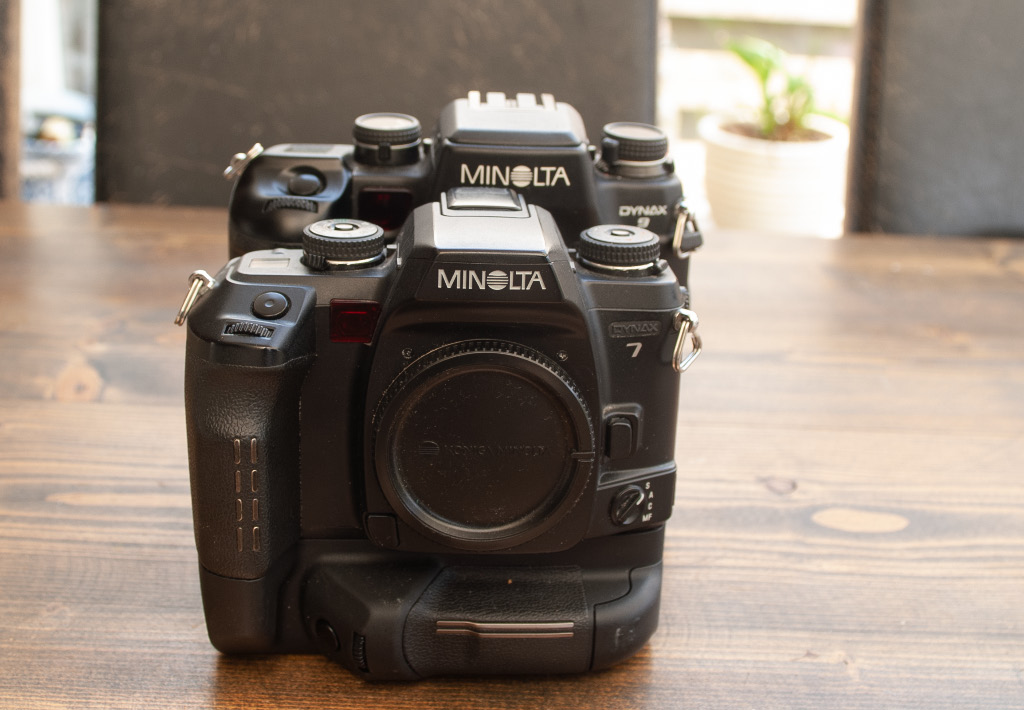
When the Sony Alpha 900 enters the ring, it turns out that it’s even bigger, but it’s a bit of a poser, since the huge vertical grip puts it much higher above the ground. It’s a bit like wearing platform shoes, innit?
Like a good big brother, the Dynax 9 is ready to protect its smaller brother against this new digital threat, counting on its weight advantage (1.6 kilos against the 1.5 of the Alpha 900) to give it the edge.
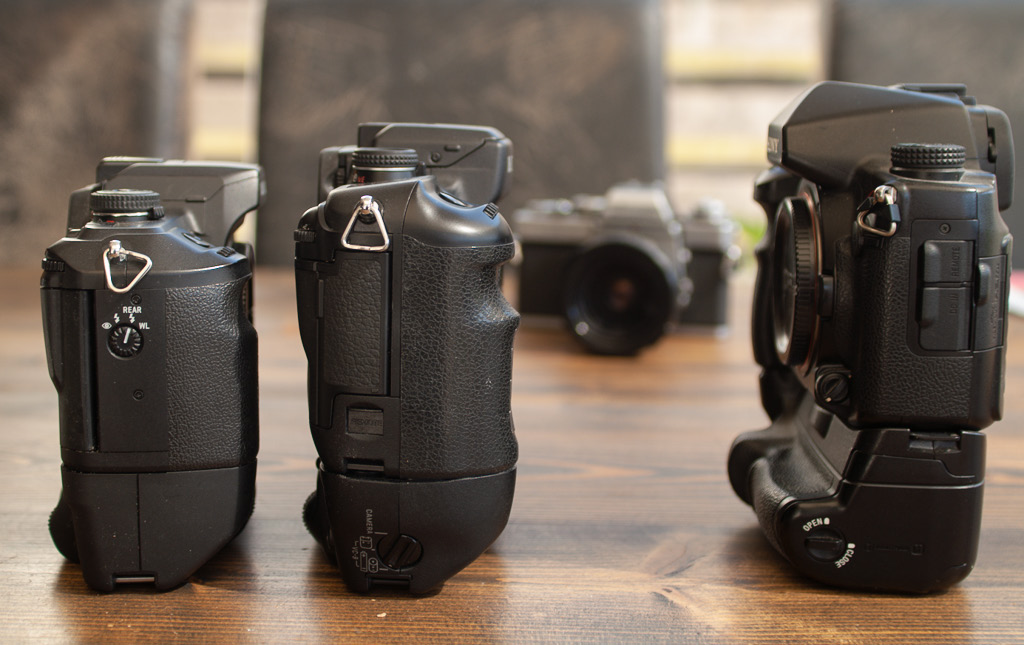
In the background, an XE-1 is watching the ensuing shenanigans with amused interest.
Enough with the silly martial arts references. How does it stack up?
It does instill confidence like nothing else. In the seventies, the XM Motor triggered the same level of confidence, but for all practical purposes (mechanical finesse, light metering accuracy, usability), the Nine is a far better camera. Whenever you operate it, it exudes a sense of being built to execute until Judgement Day, the Apocalypse, or the End Of Time, whichever comes last. The Nine makes it perfectly clear that it aims at outliving you, and it probably will.
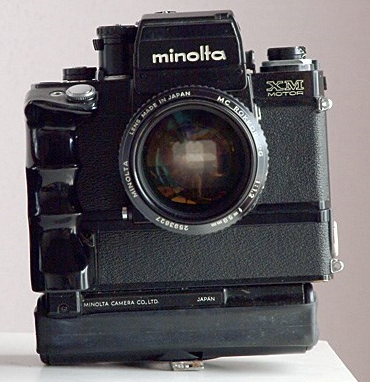
The XM Motor, for all its excellence, has its weak points: the 100% plastic battery holder is a serious point of failure (I fixed that with a section of bicycle inner tube, glued to size, to hold it closed), and, while ergonomics are stellar for a camera of the mid-seventies, the weight is even more prohibitive due to the fact that it wants to have 10 (ten!) batteries in its innards. Which it consumes at an alarming rate, by the way. On top of that, it is quite a bit noisier than the Nine.
All this makes sense — the XM Motor’s design predates the Dynax 9 by more than two decades.
Usability differences
To me, the most pleasant surprise was that the selected AF point of the Nine does, in fact, light up, allowing you to see which AF point was selected under adverse light conditions! I found this a vitally important difference between the Dynax 800si and the Dynax 7, and was unaware that the Nine does this too.
Like the 800si, the Nine has three AF points, rather than the Seven’s nine (wow, that’s a confusing sentence… but it does compile). The Seven has a bit of an advantage over the 800si in focusing in low light, and first impressions indicate that it also has this advantage over the Nine. But again, the difference is marginal.
Compared to the Seven, the battery consumption of the 800si seems a bit higher, and the Nine duplicates this. Batteries that show up as perfectly fine in the Seven, will be considered “partly depleted” by the Nine.
One noticeable difference between the Nine and all other Dynaxes I’ve had is the feel of the shutter button: finding the “partly pressed” point is harder. The Sony A77 suffers from the same problem, so it didn’t take me a long time to get used to it, but others have reported finding this problematic.
The Nine came to me without a rubber eyepiece. I had a couple of these to spare, but I found out that the camera’s lever to close the viewfinder (a facility that it shares with the A900) obstructed a clean fit.
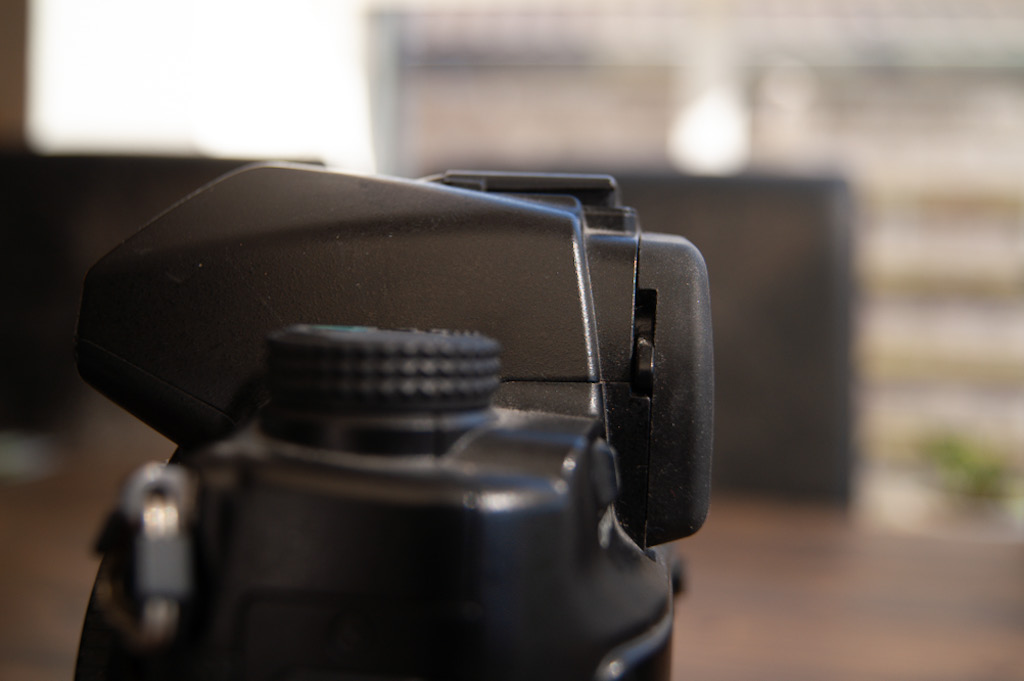
The 900 has a rubber eyepiece that has a bit of a cutout on the rear to accommodate this.
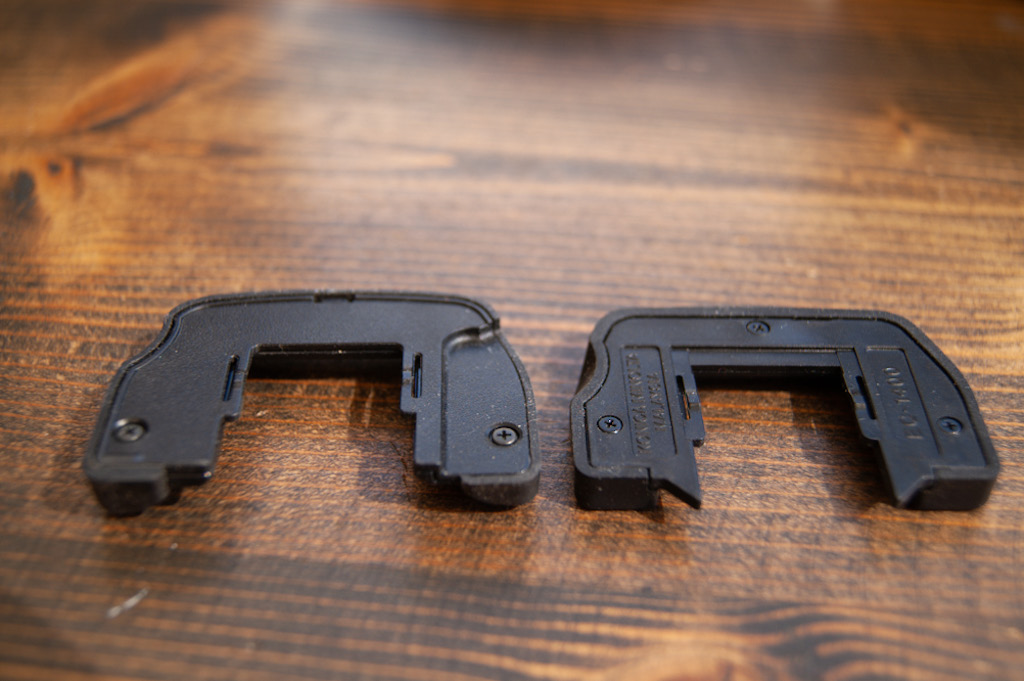
Guess I’ll have to find another one like that then.
Well then. Is the Dynax 7 still the most advanced film camera on the planet?
Yes… yes, it is. It’ll do ADI flash, it has nine AF points rather than three, it has way more configurable options to tweak it to your preference. It runs longer on a set of batteries, and it’s much easier to lug around.
It also shows more information in the viewfinder — the one I miss most on the Nine is an indicator for the selected metering mode and an indicator of exposure compensation. That’s something even the 800si can do, so I guess the folks at Minolta just forgot about it.
So… yeah, The Dynax 7 is the more advanced camera. But if reliability is factored in, the Nine may have a serious advantage. None of the features it’s lacking are dealbreakers for me — contrary to the Dynax 9xi, which, while an excellent camera, I found impossible to get to terms with because of its deeply sucky user interface.
If the Seven would meet its maker (along with a substantial number of its peers), I’ll be sad.
But now that there is the Nine in the house, I’ll be a little less sad when the Seven dies… because, for all practical purposes, the Nine is almost as good. Like the Seven, it will never get in the way of getting a good picture — and that’s what counts.
Text and all photos ©2022 Peter Huppertz.
Fun detail: all photos were made with a 16 year old Dynax 7D.
